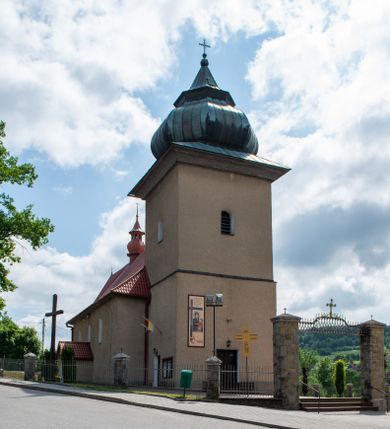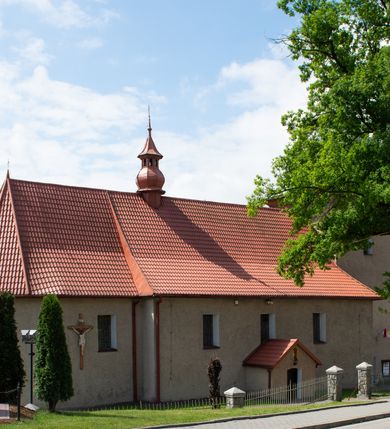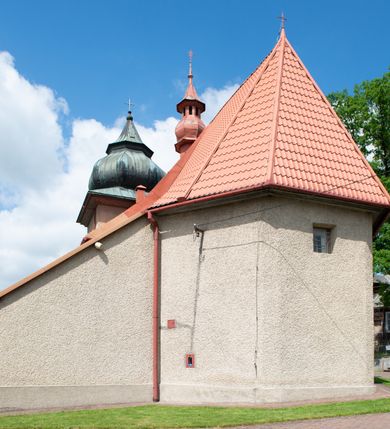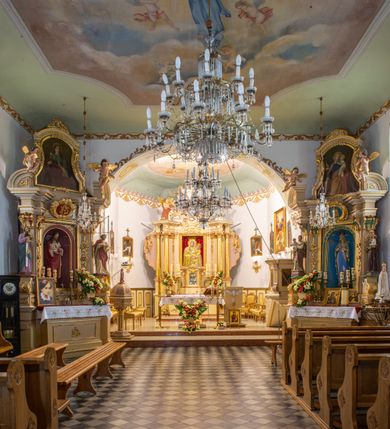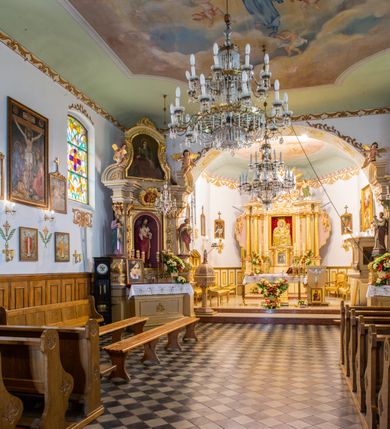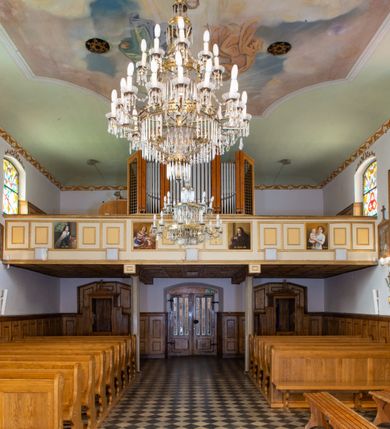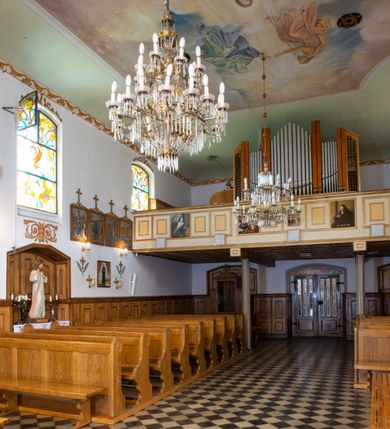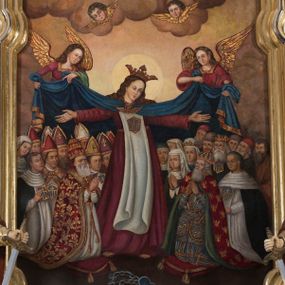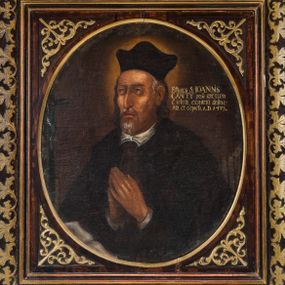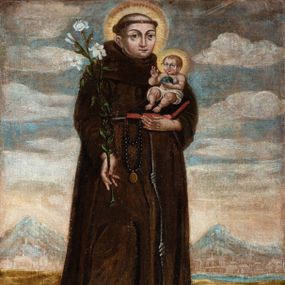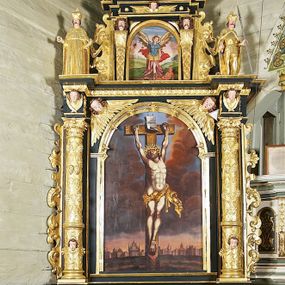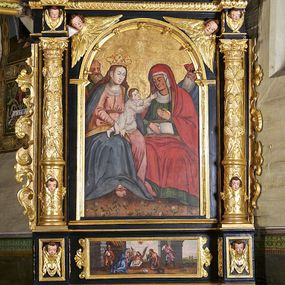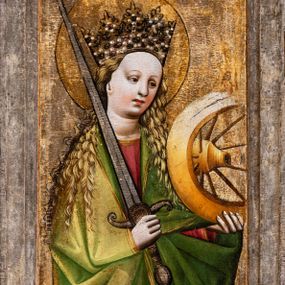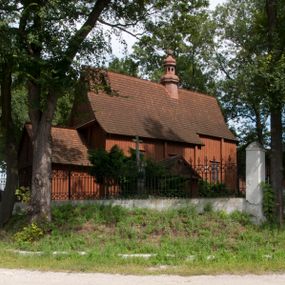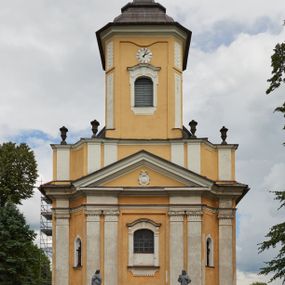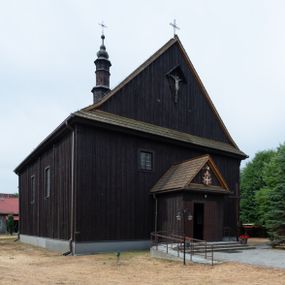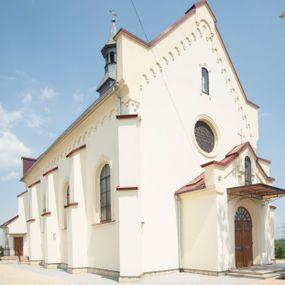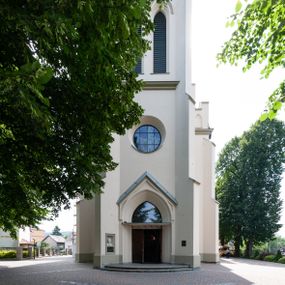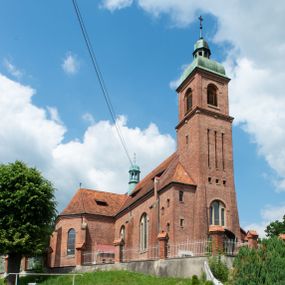
Holy Trinity Church in Bieńkówka
Place
Bieńkówka
Parish
The Holy Trinity parish in Bieńkówka
Identifier
DZIELO/13746
Amount
1
Catalogue note author
Maria Działo
History of work
The construction of the church began in 1793. In 1796, furnishings were purchased, including two side altars in the church of Norbertine Sisters at Wiślna Brama in Cracow for 200 forints and bells in the Carmelite monastery in Wiśnicz for 220 forints. On 6 July 1808 bishop Andrzej Rawa Gawroński consecrated the church. Renovations and further purchases of church equipment are reported in detail in the parish chronicle, e.g.: "On 7 September 1858, the parishioners funded a stone floor for the church, which they laid in the spring of the following year, but the walls under the loft, pews, the nave, the porch and the bell tower were not renovated at all. The thresholds, although cracked, were left as they were and a crystal chandelier was bought, however they did not think of lighting it". In 1862 the floor was laid in the sacristy, in 1895 Jędrzej Jopek from Jachówka replaced all the windows in the church, and in 1898 Antoni Stopa from Maków repainted the church. In 1948 a floor made of black and white ceramic tiles was purchased and new iron windows with larger ventilators were installed. The following years brought changes in the furnishings of the church. In 1990 church organs were sold to the church in Wola Justowska in Cracow, and the temple in Bieńkówka was furnished with new ones.
The roofing on the tower was changed twice: in 1861 and in 1897. The church tower had three cast-iron bells: the smallest one from 1802 and two larger ones from 1826, funded by parishioners who had returned from economic emigration from Chicago. During the World War II two bells were melted down by the Germans while the third one from 1826 survived, hidden in the nearby cemetery. The melted bells were replaced with new ones made in Godula's workshop in Silesia in 1958. The bells were named after the Immaculate Heart of Mary and St. Joseph. For parishioners they are of special importance, because they were consecrated by Karol Wojtyła – the then Cracovian suffragan – during episcopal visitation.
In the vicinity of the church, the "Oak of Freedom" planted in 1923 on the fifth anniversary of regaining independence should be noted, as well as the memorial stone from 2001 with a commemorative plaque in honor of the villagers who died in defense of Poland in 1939 and in the concentration camp in Oświęcim. The construction of the monument was initiated by Józef Kot, President of the Veterans Club, and its funders were: Budzów District Office, Society of Fighters for Freedom and Democracy, Poviat Starosty in Sucha Beskidzka and Bieńkówka Village Council.
Abstract
Holy Trinity Church in Bieńkówka was built in 1793. The church architecture is a characteristic example of sacred architecture in the "Josephine style" with surprising internal baroque furnishings. In 1796, furnishings were purchased, including two side altars in the church of Norbertine Sisters at Wiślna Brama in Cracow for 200 Austro-Hungarian guldens and bells in the Carmelite monastery in Wiśnicz for 220 Austro-Hungarian guldens. On 6 July 1808 bishop Andrzej Rawa Gawroński consecrated the church. Among the works of the Cracovian artistic community, one can find a pattern that was used to make the structure of the high altar in Bieńkówka. It is the altar of Our Lady of the Rosary from 1768, located in the Dominican church in Cracow, attributed to Wojciech Rojowski. In the main area of the reredos in Bieńkówka, as in the Dominican church in Cracow, there is a painting of Our Lady of the Snows.
Other works from this place
Other works from this year
Similar works
How to cite?
Maria Działo, "Holy Trinity Church in Bieńkówka ", [in:] "The Sacred Lesser Poland Heritage", 2026, source: https://sdm.upjp2.edu.pl/en/works/holy-trinity-church-in-bienkowka
